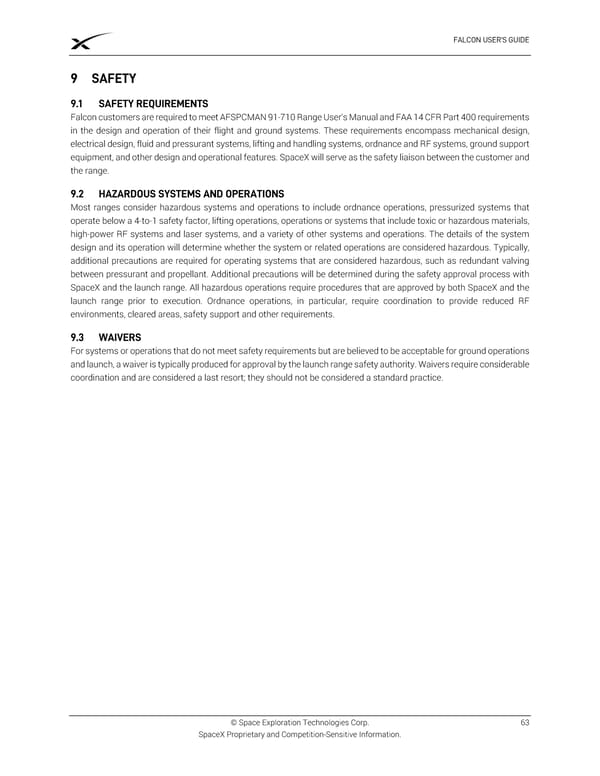FALCON USER’S GUIDE 9 SAFETY SAFETY REQUIREMENTS Falcon customers are required to meet AFSPCMAN 91-710 Range User's Manual and FAA 14 CFR Part 400 requirements in the design and operation of their flight and ground systems. These requirements encompass mechanical design, electrical design, fluid and pressurant systems, lifting and handling systems, ordnance and RF systems, ground support equipment, and other design and operational features. SpaceX will serve as the safety liaison between the customer and the range. HAZARDOUS SYSTEMS AND OPERATIONS Most ranges consider hazardous systems and operations to include ordnance operations, pressurized systems that operate below a 4-to-1 safety factor, lifting operations, operations or systems that include toxic or hazardous materials, high-power RF systems and laser systems, and a variety of other systems and operations. The details of the system design and its operation will determine whether the system or related operations are considered hazardous. Typically, additional precautions are required for operating systems that are considered hazardous, such as redundant valving between pressurant and propellant. Additional precautions will be determined during the safety approval process with SpaceX and the launch range. All hazardous operations require procedures that are approved by both SpaceX and the launch range prior to execution. Ordnance operations, in particular, require coordination to provide reduced RF environments, cleared areas, safety support and other requirements. WAIVERS For systems or operations that do not meet safety requirements but are believed to be acceptable for ground operations and launch, a waiver is typically produced for approval by the launch range safety authority. Waivers require considerable coordination and are considered a last resort; they should not be considered a standard practice. © Space Exploration Technologies Corp. 63 SpaceX Proprietary and Competition-Sensitive Information.
 SPACEX FALCON USER’S GUIDE Page 66 Page 68
SPACEX FALCON USER’S GUIDE Page 66 Page 68